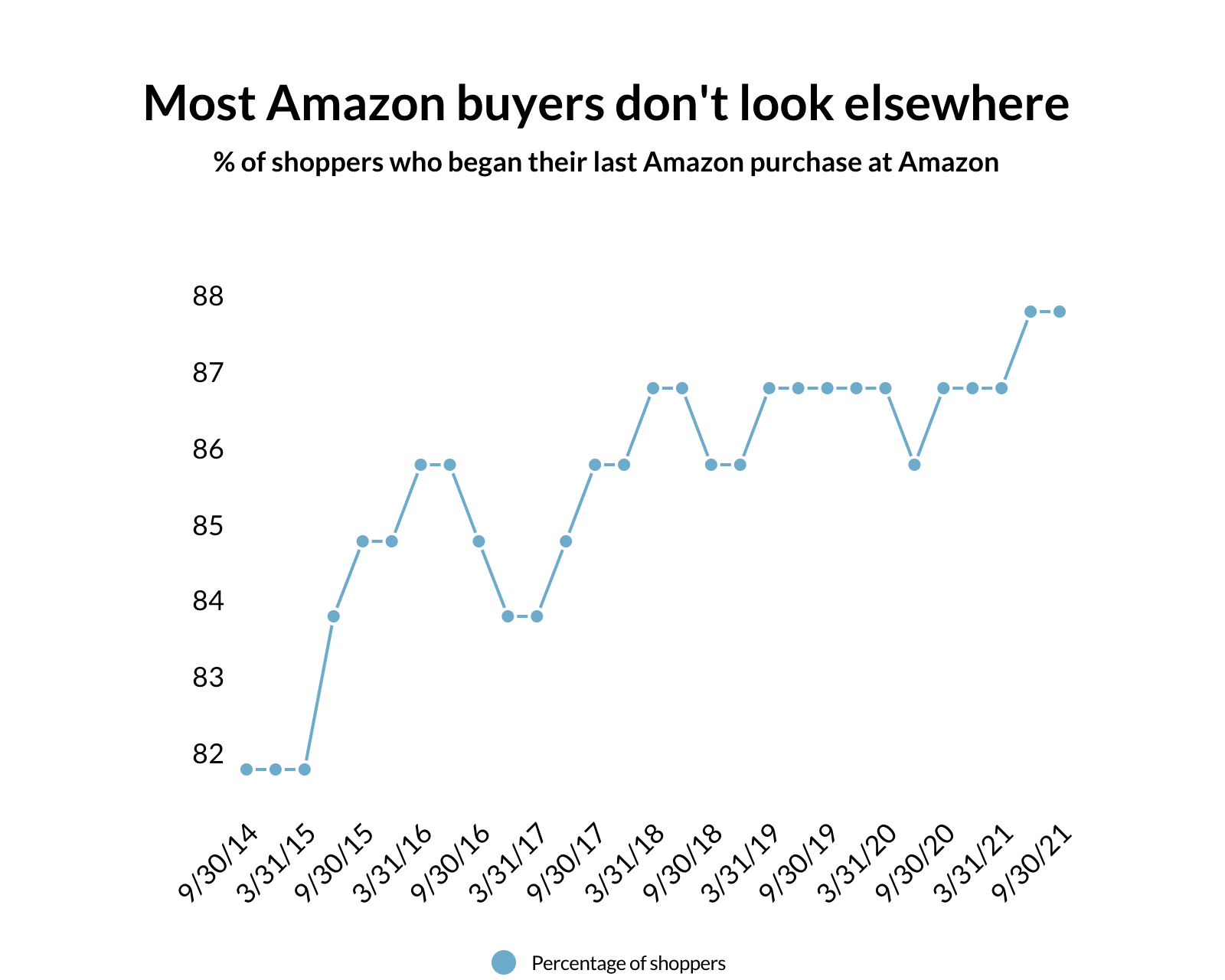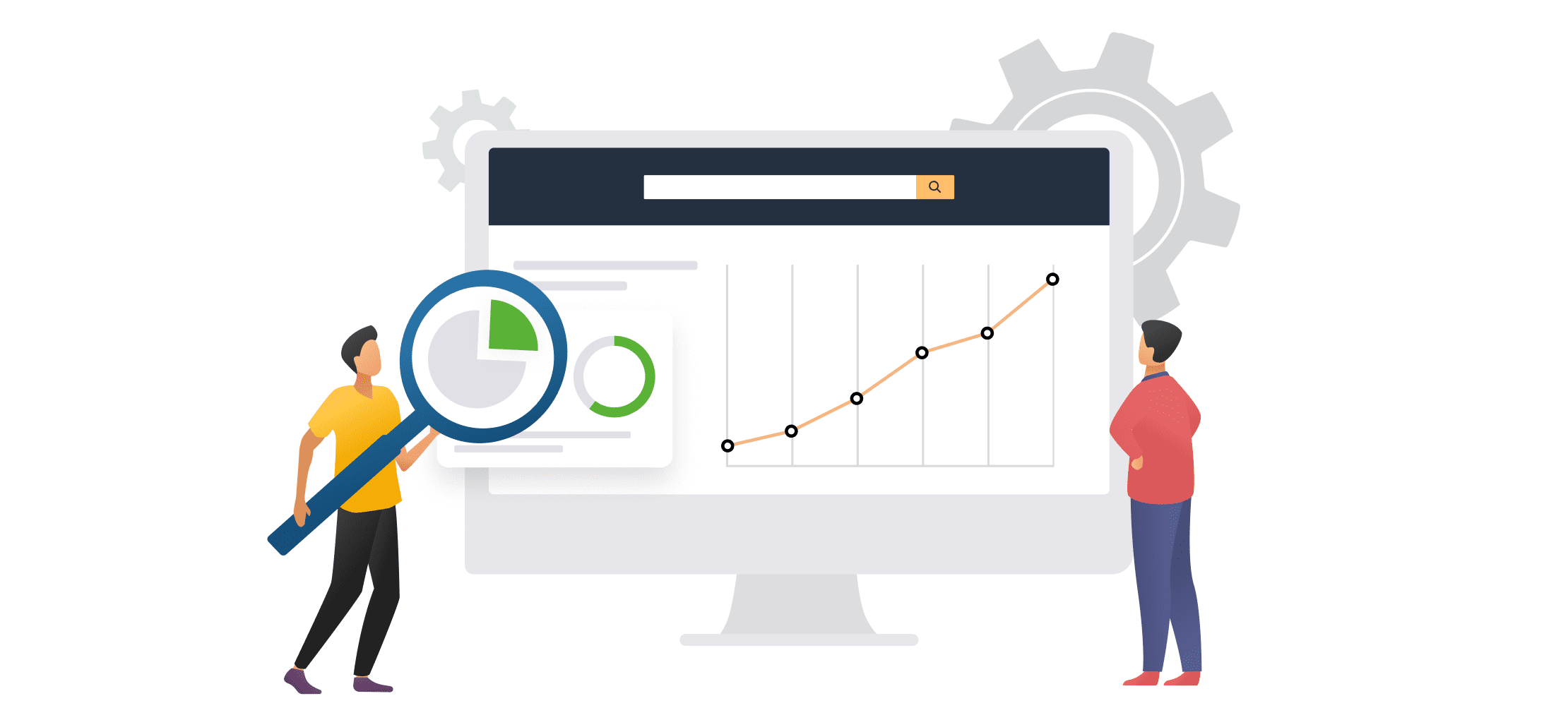Our new post covers everything you need to know about the latest A10 ranking factors, search visibility strategies, and what’s changed this year
Let me start by stating the obvious: no matter how gorgeous your product is, it will hardly sell well unless it hits the top spot in the Amazon search results.
At its core, Amazon’s ranking algorithm is similar to Google’s search engine: both are designed to show the most relevant search results on the first page. Thus, whether it’s your website or your product, it must show up high in order to gain higher visibility. Calling up an old joke, the best place to hide a body is Google’s second search page. Why? Because no one ever goes there!
Just like Google users, Amazon customers simply don’t have the patience to sift through 10 pages, and 70% of them never look beyond the first page.
With this in mind, thousands of Amazon sellers are trying to solve the enigma of the Amazon search engine. At first sight, the formula is simple and out in the open: Actionable Amazon SEO strategy + Compelling content = Organic sales.
However, driving organic traffic can be a backbreaking task with the ever-changing Amazon ranking requirements. Going by the recent updates to the Amazon A9 algorithm, Amazon’s ranking factors shifted their focus from advertising to product relevancy. But how does it all work?
In this article, we are drilling into one of Amazon’s most heavily guarded secrets – the ranking algorithm – to more clearly highlight the developments and vividly summarize the A10 algorithm’s key components that you should consider to rank higher on Amazon.
So, let’s get the ball rolling.
What is an Amazon Search Algorithm?
Let’s first have a quick look at the anatomy of a search algorithm as a whole. A search algorithm is a complex system of ranking factors that determines the relevance and quality of the content against a particular search query. In order to provide the most accurate search results, algorithms are constantly evolving.
Despite the number of structural similarities, there is a crucial difference between Google’s and Amazon’s search engines. Unlike Google, which is centered on study and research, Amazon is laser-focused on the shopping experience. Thus, while Google evaluates websites by their loading speed or topical authority, Amazon prioritizes conversions and sales metrics.
Amazon’s algorithm determines your product ranking by analyzing your product listings, matching them with online shoppers’ search queries, and then placing the most relevant ones on the first page of the search results.
Did you know? According to Consumer Intelligence Research Partners, 88% of Amazon shoppers said they only considered Amazon for their most recent Amazon purchase.

In the wake of escalating Amazon customer loyalty, having your product listings optimized for Amazon’s ranking algorithm is your top priority. But how does the Amazon algorithm work? Let’s drill down into its main working principles.
How Does Amazon Product Ranking Work?
Like there is no science specifying how an online shopper searches for a product, there is no exact way to pinpoint how Amazon’s algorithm targets customer queries. As a result, everything from keyword relevancy and sales velocity to product availability and fulfillment methods can make or break your journey to the top of Amazon search results.
What happens is that the search algorithm is constantly changing and maturing. Therefore, in order to adapt to the ever-changing Amazon and eCommerce trends, an online seller should know the main ranking factors taken as an input into the so-called Amazon A10 Algorithm.
But first things first, what is the Amazon A10 update, and what makes it different from the A9 algorithm?
What is the A9 Algorithm?
Amazon A9 is the official name of the Amazon search algorithm, which evaluates product detail pages based on the two primary ranking factors: relevance and performance.
Relevance
Keyword relevancy is about choosing proper search terms for your Amazon listings that would effectively match online shoppers’ queries. While optimizing your product detail page, make sure you use the most important and appealing keywords in your product title, bullet points, and product description.
Performance
Along with text match relevancy, several rankings factors related to performance are harder to prioritize and, therefore, control. Each aspect of your product performance takes a coordinated strategy based on actionable metrics and is backed with robust Amazon Seller tools.
TL;DR In terms of product performance, Amazon tends to lean on the following metrics:
– Sales Velocity & Sales History
– Conversion Rate
– Click-Through Rate
– Stock Availability
– Reviews
– Amazon Advertising
Additionally, there are certain indirect ranking factors such as images, fulfillment method, and A+ Content, to name a few, helping online sellers to earn more valuable leads and thus significantly influence conversions.
What is the Amazon A10 Update?
First, it is not the ranking factors themselves that changed, but rather their weighting. While A9 focused mainly on keyword consistency, text match, and advertising, A10 seems to pursue a more balanced ranking by putting customer experience at the forefront.
Although Amazon did modify its search algorithm, there was no “official” update from A9 to A10. Informally known as Amazon A10, the updated algorithm got its name through Amazon sellers’ good wits.
Side note: It is not Amazon alone that shifts the focus to the consumer experience. As of June 2021, Google also rolled out an update of its Core Web Vitals, implementing 3 more metrics in the Google page experience signals that quantify the user experience while interacting with a web page.
What’s New? Main Factors Affecting the A10 Algorithm
1. Relevant Keywords
Whereas having profitable keywords in your Amazon listings is still a decisive product ranking factor, the focus shifted to the customer intent. Amazon A10 drives Amazon sellers to conduct additional research to know more about their buyer persona.
Pro Tips:
- Instead of overstuffing your product titles and descriptions with best-performing keywords, try crafting your product listing in an engaging way that captures customers’ attention.
- Additional attributes and keywords matter more now than ever: download a Category Listing Report to complete missing attributes via upload or visit the Listing Quality Dashboard to fix listings on the fly and ensure you’re maxing out all relevancy fields.
2. Seller Authority
Here’s a fact: Amazon attaches great importance to merchants’ activity in the marketplace, including seller’s feedback rating, performance metrics, inventory levels, and fulfillment method (all closely intertwined with customer experience!).

Given that an updated Amazon algorithm is now favoring experience over profitability, a competitive pricing strategy (although still applicable!) won’t bring you the Buy Box. The lowest price is no longer the largest determining factor in winning the Amazon Featured Offer. Now the seller rating and account metrics are weighted highest.
Pro Tips:
Provide excellent customer service to improve your seller rating and win the Buy Box:
- Respond to customers’ questions and address relevant concerns or complaints in a timely and effective manner
- Choose a robust fulfillment method to avoid getting into hot water with shipments, resulting in bad customer feedback
- Keep close track of your inventory to have your products in stock so that the customer can buy them immediately
- Pay special attention to order cancellation rate, refund rate, valid product tracking, and other important seller metrics
By having a broad array of products, handling returns well, and attaining great reviews, you create excellent value for your customers. This will significantly increase your chances to display high on Amazon.
3. Sales History & Velocity
Did you know that the Amazon search engine is supposed to be the most greedy one? All kidding aside, the more sales you generate as an Amazon seller, the more Amazon benefits. That said, your product is likely to rank higher on Amazon if it earns significant sales currently and in the meantime.
Side note: Sales from organically generated clicks now have a more significant impact on product ranking than those caused by advertising.
Pro Tips:
- Keep your products available and monitor slow-moving stock or any drop in sales to step forward with promotions or blowouts.
- Put more effort into generating organic sales with an efficient email marketing campaign or seasonable discounts.
Important note: Don’t go too far with your marketing activities! Amazon tends to take down the listings with too many discounts and promotions.
4. Click-Through Rate
As you know, the Click-Through Rate is the number of clicks your product gets after being displayed on a search results page: the higher your CTR, the higher your product’s rank.
CTR is highly weighted in determining relevance in A10, so main images and titles matter more now than ever.
Pro Tips:
- Drive internal traffic: a compelling main image and an impactful title can help improve your CTR.
- Generate off-site sales by driving external traffic: you can bank on social media channels, apply for the Amazon Influencer Program, or adopt any other strategy that suits your business needs.

Off-Amazon traffic highly influences product relevancy, so routing traffic from social or email campaigns can be really helpful, especially with new product launches.
5. Conversion Rate
A high percentage of visitors that clicked on your product detail page and ended up buying from you is also a big contribution to your ranking.
Pro Tips: With plenty of ways to earn more conversions, you can hit this target by
- staying relevant to customers’ search queries
- keeping your product at a competitive target price
- using A+ Content to make your listing more attractive
- uploading engaging videos highlighting the benefits of your product
6. Reviews
With the Amazon A10 update, product reviews remain one of the decisive ranking factors. A high number of positive reviews gives your product social proof and good reasons for the Amazon A10 algorithm to place it higher in search results. So, this is the call for Amazon sellers to have dogged persistence in getting reviews.
Important note: Amazon goes to great lengths to crack down on fraudulent reviews. By no means should you “buy” them! When asking buyers for fake reviews you risk ruining your brand reputation, when the truth comes out. At this point, the fair play seems to be a more effective strategy.
Pro Tips:
- Sell awesome products which you can stand by.
- Build trustful relationships with your customers, creating a strong online community around your brand.
- Within the Amazon Brand Registry program, you can monitor customer reviews on the Customer Reviews page straight from your Seller Central Brand Dashboard. As a brand owner, you can also reply to critical reviews using the offered message templates.
- Take advantage of your social media channels and engage with online influencers.
Bred Darby, Director of Managed Services at Seller Labs, is also sure that social media is getting momentum in Amazon and eCommerce.
- Join the Amazon Vine program for the sake of honest and actionable feedback on your products.
7. Amazon Pay-Per-Click Advertising
After the Amazon A10 update rumors told us that the main driving factor of Amazon SEO, Sponsored Ads yielded the palm to organic sales. However, a closer focus on relevancy doesn’t necessarily diminish the role of Amazon Advertising. Amazon PPC campaigns still remain one of the crucial ways to foster your long-term sales strategy.
Pro Tips:
- Diversify your ad budget and make way for off-Amazon advertising to bring additional traffic to your product listings.
- Run PPC campaigns when you need to boost a new product or uplift underperforming listings.
- Display PPC ads when they are more likely to convert.
Jessica Wright, Amazon Brand Strategist on the Seller Labs Managed Services team, is shedding light on how you can schedule your PPC advertising campaigns:
Final Takeaway
By spending the time to support your listings properly, you’ll be able to offer a gold standard of customer experience. Going by the Amazon A10 algorithm is your way to high ranking and sales ramp-up.
As with anything new, adapting to the updated Amazon algorithm takes a bit of time and effort. Although our pro tips won’t make you an Amazon SEO expert overnight, they can back you while fostering a comprehensible Amazon SEO optimization strategy.
Engineered to hack the Amazon SEO algorithm, Seller Lab PRO can help you improve your product listings as per the latest Amazon update. At the same time, our team of experts can do all the heavy lifting of listing optimization for you.
Judging by the number of requests the Seller Labs Managed Services team gets from Amazon sellers, the Amazon listing optimization service is much in demand. So, suppose you have any trouble handling your product listings, our profit mentality services are here to help.







